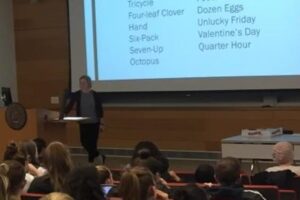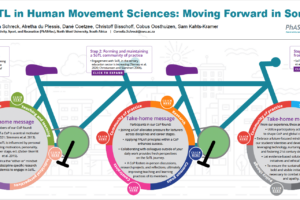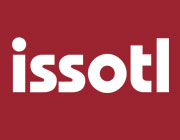
International Collaborative Writing Groups and Public SoTL
By Henk Huijser (Queensland University of Technology – h.huijser@qut.edu.au), Janel Seeley (University of Wyoming) & James Cronin (University College Cork)
Inspired by a keynote by Nancy Chick at the 2019 ISSOTL Conference, where she called for us to find more ways to make SoTL more public, the public version of the International Collaborative Writing Groups finally came together at the 2022 ISSOTL Conference in Kelowna.
The initial plan was for the ICWG-Public to be launched at the 2020 ISSOTL Conference, but we all know what happened in 2020 that threw a significant spanner in the works. The initial project proposals were either reworked or new ones were considered and accepted. Once project teams were formed the initial work to conceptualise these projects could begin in earnest. Leading up to the conference in Kelowna, there was considerable discussion about the perceived need to attend the conference in person. After two years of Covid-19, the idea that there would be no option to participate virtually was controversial. However, those who had previously been part of the academic version of ICWGs were adamant that the face-to-face component was crucial. As it turned out, they were right.

Project teams need sustained time to conceptualise their projects, and to develop a team culture. The team building process was significantly aided by a range of Janel Seeley-designed team building activities, including a Halloween competition, a black-out poetry activity (answering the question: Why is Public SoTL important?), and most successfully, an ‘escape room’ activity that relied on team work to escape the academic ‘ivory tower’.
The process of conceptualising projects can be difficult at times, as it involves negotiation of priorities, roles, and responsibilities, so it ultimately also involves a consensus process of defining each project’s focus. The added complication in the case of Public SoTL was that each team had to carefully consider what Public SoTL actually meant, and furthermore, they had to consider what Public SoTL artefacts might look like.
As part of the two and a half days of workshopping the projects, Nancy Chick and Jennifer Friberg, both of whom are part of one of the project teams, did a presentation based on their recent book called Going Public Reconsidered. In that book they explore the notion of Public SoTL in detail, and address questions such as:
- What is happening in the world that would benefit from a SoTL-informed perspective?
- What information, insight, or knowledge does SoTL generate?
- Who beyond higher education might care about this information, insight, or knowledge, and why?
- How can we adapt to the venues and platforms where they currently get their information and knowledge?
The team discussions that followed made it clear that there are no easy and straightforward answers to these questions, nor to the fundamental question of what constitutes Public SoTL, yet everyone agreed on the need for it. Ultimately, however, each group settled on a path forward and the four resulting projects are exciting and will generate some very interesting artefacts.
The focus of each of the four projects is as follows:
- One project team aims to produce a series of story-based podcasts with a diverse group of people from ‘the public’ who will answer the question: ‘Who did you learn a lot from but never had a chance to thank’?
- Another project will focus on involving ‘the public’ in educating new medical staff and interns, and in the process improve the public literacy of health and social care graduates. The communication will be designed for the ‘public’ space of a doctor’s waiting room.
- A third project aims to translate what we know about teaching and learning to support social justice.
- The fourth project will approach either a school or an educational association in a US context as a partner to explore how critical race theory can be made accessible for education outside of the academy.

While each of these projects will explore their own ways of communicating with the ‘public’, we as ICWG leaders are also exploring ways of communicating about the overall initiative. We are starting with this blog post, ( there will be more to come, including blog posts from individual project teams), and during the conference there was a #ICWGPublic Twitter hashtag. There may be other artefacts as we collectively explore how to communicate ‘publicly’ about SoTL, so stay tuned and we hope there will be plenty of opportunities for you to engage with ICWGs Public in a range of public forums.




